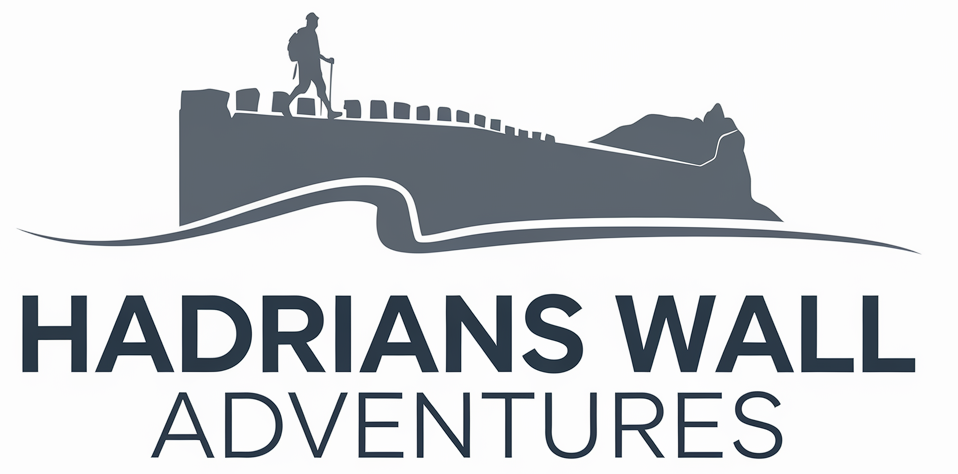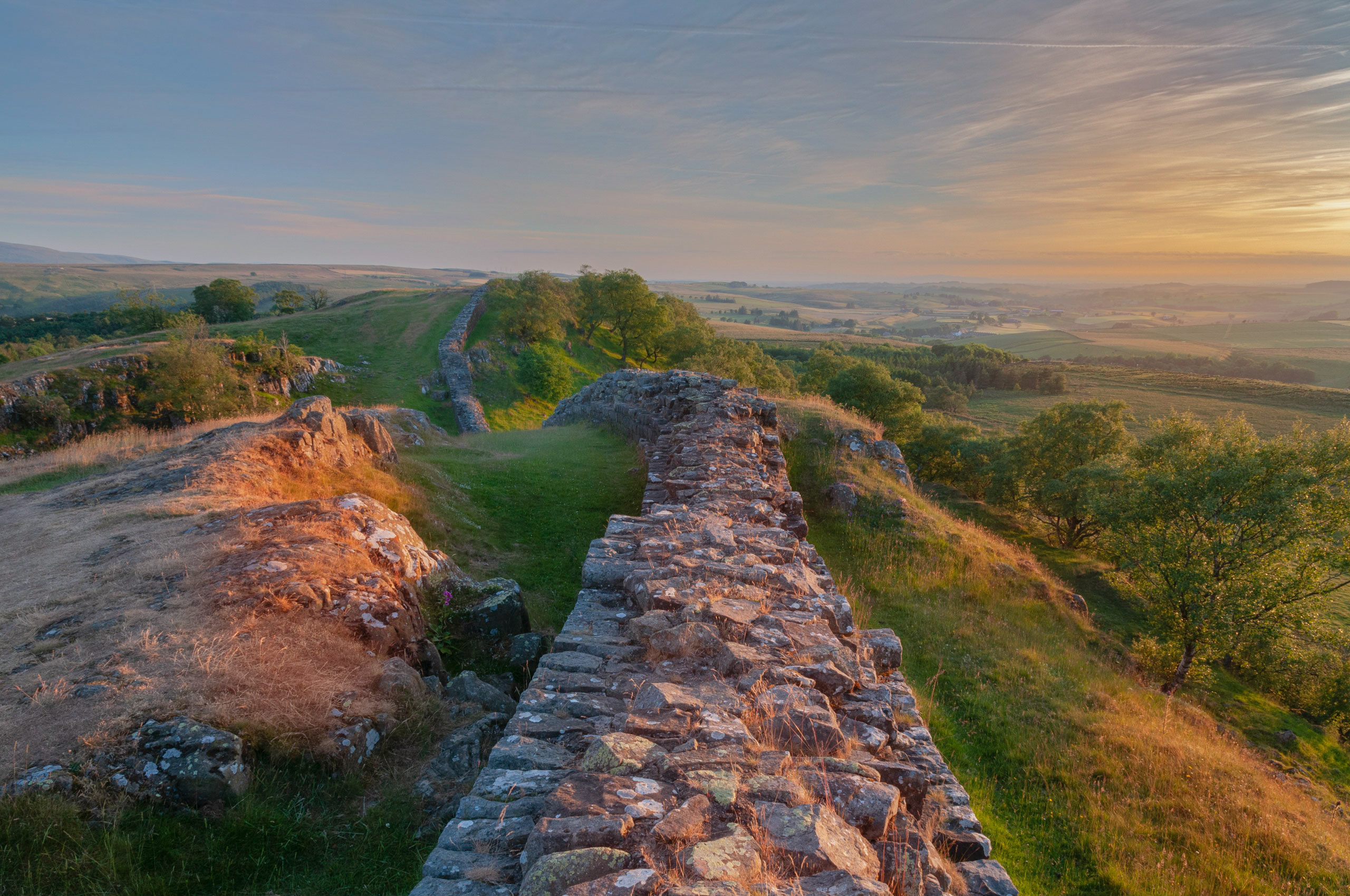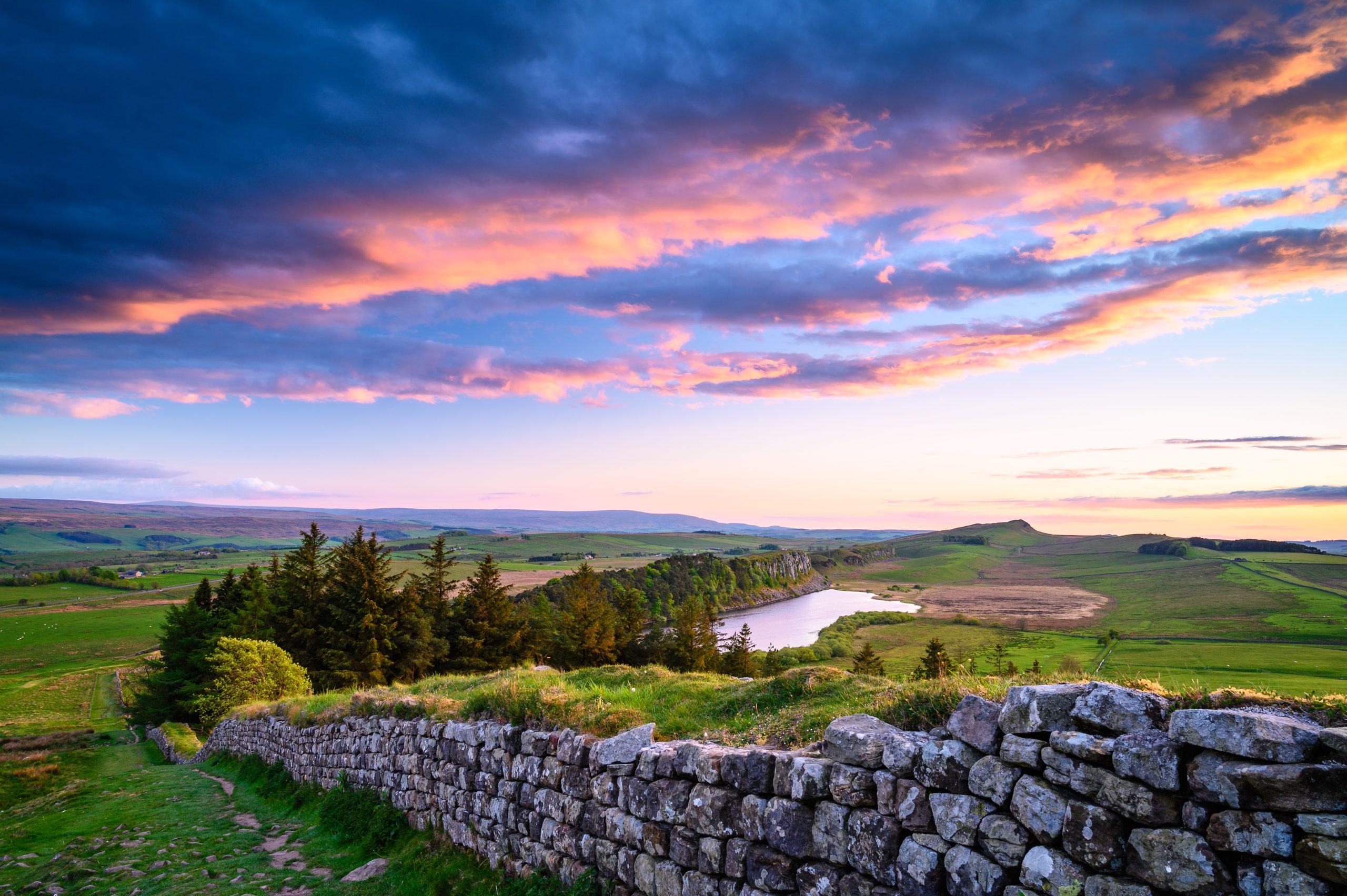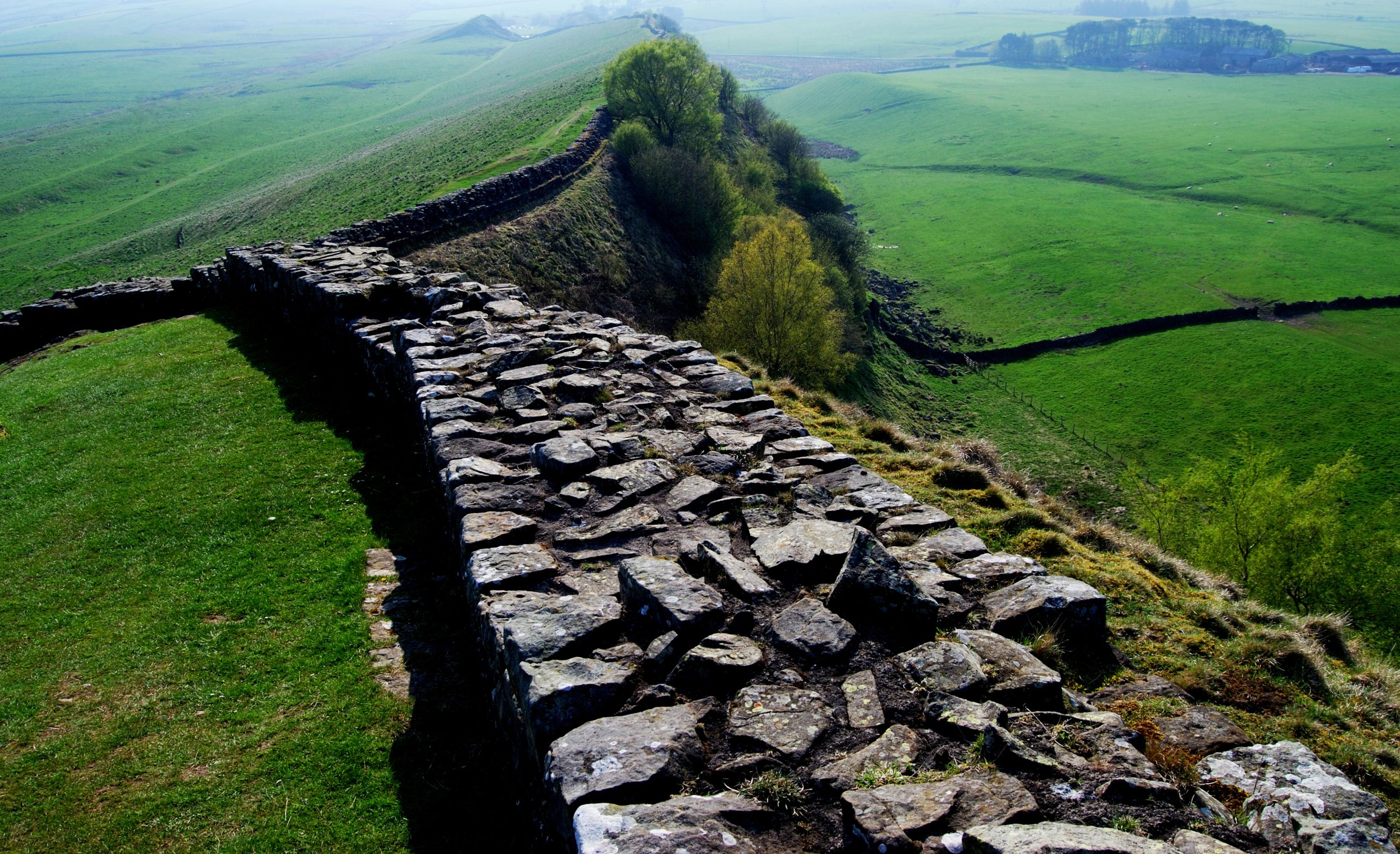Birdoswald occupies a commanding position on a high ridge above the River Irthing gorge, with sweeping views across the Cumbrian countryside toward the Solway Firth. This fort’s exposed stonework is exceptionally clear, and its setting combines archaeological interest with landscape drama.
The History
Built around AD 125, shortly after Hadrian’s Wall‘s initial construction, Birdoswald housed approximately 1,000 soldiers, making it one of the larger forts along the wall. The First Cohort of Dacians, originally from what is now Romania, garrisoned here initially, though various units rotated through during the Roman period.
The fort’s Latin name, Banna, means “spur” or “peak,” referencing its elevated position. The site’s strategic value was obvious—from these ramparts, sentries could observe the river valley below and the approaches from the north across miles of open countryside.
What makes Birdoswald particularly fascinating archaeologically is evidence of continuous occupation long after the Roman Empire withdrew from Britain around AD 410. Whilst most Roman forts were abandoned, Birdoswald shows signs of timber hall construction over earlier stone buildings during the 5th and 6th centuries.
This continuity suggests that authority and defensive organization persisted here even as Roman military infrastructure collapsed elsewhere. The transition from Roman to post-Roman Britain, usually seen as a period of chaos and decline, appears more complex at Birdoswald. Someone maintained organized control here for decades after official Roman withdrawal.
Why Visit Birdoswald
Birdoswald offers a particularly clear understanding of Roman fort construction because much of the stonework stands several courses high. The fort’s outline is obvious, and you can walk around the complete defensive perimeter.
The defensive walls survive impressively:
- The south gateway is remarkably intact with its passageway and guard chambers clearly visible
- The north gateway shows similar preservation, facing toward the frontier
- Wall sections stand to shoulder height in places
- Corner towers demonstrate how defenders watched for threats from elevated positions
Walking through the south gateway, you enter the fort exactly as Roman soldiers did nearly 2,000 years ago. The worn threshold stones show where countless boots passed through over centuries of occupation.
The internal buildings include:
- The headquarters building (principia) with its courtyard and administrative offices
- The granaries with their raised floors and buttressed walls
- Barrack blocks showing different construction phases
- The commanding officer’s house with evidence of comfortable living quarters
The granaries are particularly impressive. Their walls still stand several courses high, and you can see the supporting buttresses that prevented the grain-filled buildings from bulging outward under weight. The raised floors kept stored grain dry and vermin-free.
Hadrian’s Wall itself runs through the fort, and sections either side are well-preserved. You can walk alongside the wall as it continues west toward the River Irthing crossing and east toward Gilsland. The wall’s substantial width is obvious here—broad enough for soldiers to patrol along the top.
The views from Birdoswald are outstanding. Standing at the north ramparts, you look across the Irthing valley toward distant hills. On clear days, you can see toward the Solway Firth and the Scottish borders. The strategic importance of this position becomes immediately apparent.
The visitor centre provides excellent interpretation with displays covering:
- The fort’s construction and military function
- Daily life for Roman soldiers on the frontier
- The transition from Roman to post-Roman occupation
- Local finds from excavations
- Interactive elements for understanding military life
Time Required
Allow 90 minutes to two hours for a thorough visit. This provides time to walk the complete fort perimeter, explore the internal buildings, visit the centre, and appreciate the views. The site is independently managed (not English Heritage) and charges admission.
The farm café at Birdoswald serves excellent refreshments including full meals, making this a good lunch stop for walkers. Many people combine fort exploration with a leisurely lunch, extending their visit to three hours. The café’s outdoor seating has panoramic views toward the Scottish borders.
Location on the Trail
Birdoswald lies directly on the Hadrian’s Wall Path, approximately 50 miles from the trail’s western end at Bowness-on-Solway. This places it in the western third of the walk, beyond the dramatic central crags but before the final section through flatter farmland toward the Solway.
From the east, you’ll have descended from the high drama of the Whin Sill, passed through Gilsland, and walked easier terrain before Birdoswald’s ridge position creates a final elevated section. The approach from the east offers good views of the fort’s commanding position.
From the west, Birdoswald comes after you’ve walked through the gentler western sections of the trail. The fort marks a more substantial upland section before you continue east toward the more dramatic central regions.
The fort entrance is immediately adjacent to the trail—you cannot miss it. Many walking itineraries schedule an overnight stop at nearby accommodation (Banks, Gilsland, or Greenhead), making Birdoswald an easy visit without time pressure.
Practical Tips for Walkers
Birdoswald’s exposed hilltop position means weather can be challenging. Even on calm days in the valley, wind often sweeps across the ridge. Bring an extra layer and waterproofs regardless of weather forecasts. The visitor centre provides welcome shelter in poor conditions.
The site opens daily from March through October, with limited or closed access in winter. Summer visits offer the best weather and longest daylight, though spring (April-May) and early autumn (September) often provide clearer views and more comfortable temperatures for walking the exposed ramparts.
Facilities are excellent. The café serves hot meals, snacks, and drinks throughout the day. Toilets are clean and well-maintained. A gift shop sells books, local products, and walking supplies. You can refill water bottles here.
If you’re carrying your full pack, ask at the visitor centre about storing it whilst you explore the fort. Walking the perimeter and examining buildings is more enjoyable without a heavy load. The staff are generally very accommodating toward long-distance walkers.
The terrain involves some slopes and uneven surfaces, but nothing as challenging as the steep climbs around Steel Rigg or Housesteads. The paths around the fort are mowed grass with some graveled sections. Good walking boots provide adequate grip in all but icy conditions.
Photography at Birdoswald is superb. The elevated position provides natural vantage points for landscape shots. Late afternoon light particularly enhances the views west toward the Solway. The stone walls and gateways photograph well at any time, with the substantial remains creating strong compositions.
The interpretation boards throughout the site are detailed and informative. Take time to read them—they explain architectural features and historical context that might otherwise be unclear. The visitor centre’s displays complement the outdoor interpretation with artifacts and detailed explanations.
Many walkers combine Birdoswald with a rest day or shorter walking stage. The Banks area, about a mile west, has accommodation options. Staying here allows a relaxed morning visit to Birdoswald before either resting for the afternoon or continuing with a shorter walking stage.
The surrounding landscape includes quieter sections of the wall that receive fewer visitors. Walking west from Birdoswald toward Banks, or east toward Gilsland, you often have long stretches of the trail almost to yourself, creating a more intimate experience of the wall in its landscape.
Bird watching from Birdoswald’s ramparts can be excellent. The elevated position and open countryside attract raptors including buzzards and occasionally kestrels. The surrounding farmland supports good populations of songbirds. Binoculars add an extra dimension to your visit if you’re interested in wildlife.





